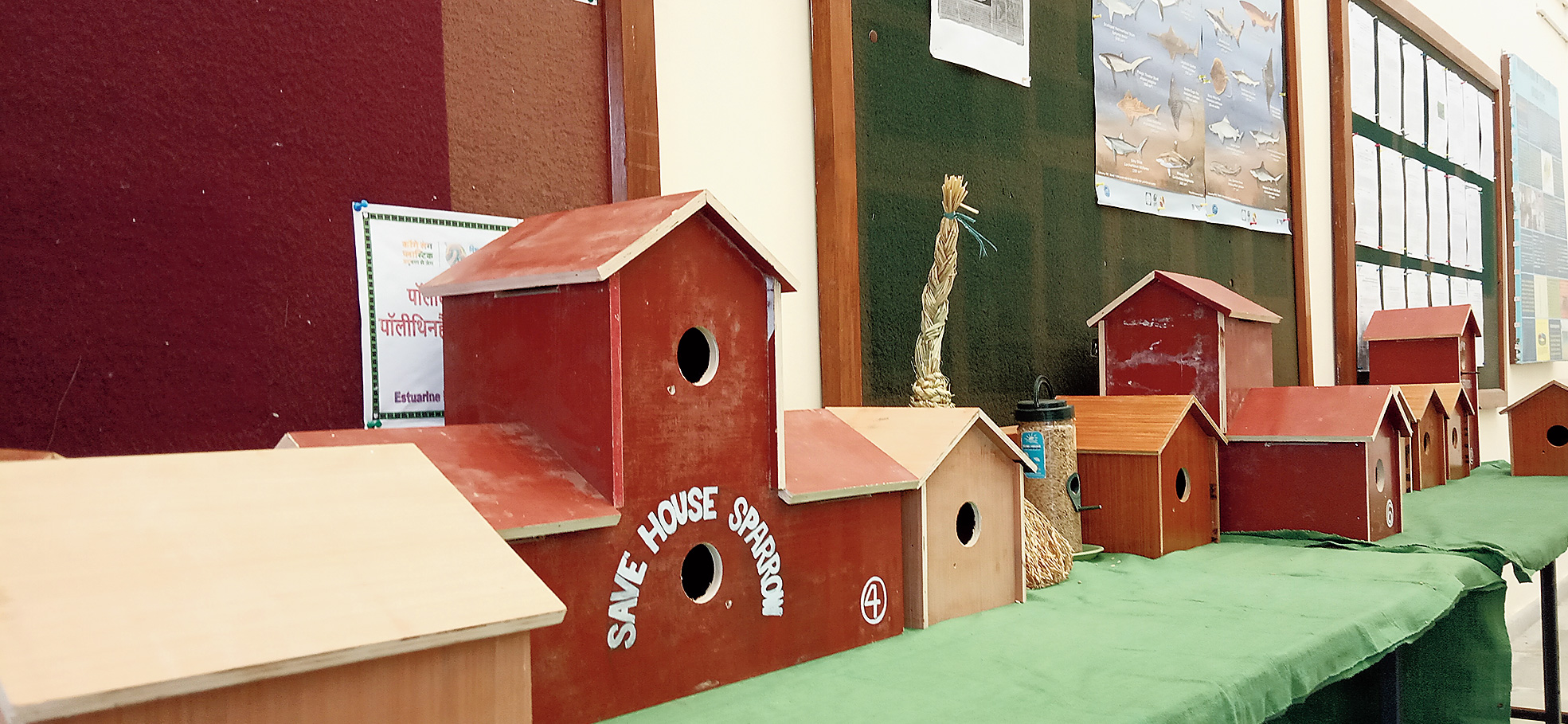The Rushikulya Sea Turtle Protection Committee (RSTPC), comprising youths of Purunabandh village in Ganjam district, which is striving hard to protect of the endangered Olive Ridley turtles since 1994, has decided to boost its ‘Save Sparrow’ campaign. The organisation has started taking measures to conserve the house sparrow since 2007.
Rabindra Kumar Sahu, secretary of the RSTPC said: “We are providing 200 artificial nests to the public for the conservation and nourishment of sparrows in Gopalpur in collaboration with the Forest Department. The ‘Save Sparrow’ campaign was launched in Gopalpur 3 years ago.”
The organisation has spread its campaign in 10 districts in Odisha and three states — Andhra Pradesh, Karnataka and Uttarakhand. It started the conservation effort for the sparrows during 2008 in Purunabandh village with only seven sparrows. The number has increased considerably.
“I never dreamt that the campaign will touch such a level. Everybody must come forward to install at least one nest for the sparrows in their house”, said Rabindra who received a national award for conservation of house sparrows from Pune based Nature Society during 2015. Rabindra has also received two national awards for the protection of Olive Ridley sea turtles. He is popularly known as ‘Birdman’ of Ganjam.
Rabindra has requested the forest department officials for plantation of more and more neem trees which is highly essential for the survival of the sparrows.
Divisional forest officer of Berhampur Ashis Kumar Behera praised RSTPC and Anchalik Vikas Parishad of Gunthabandha for their initiatives in protecting house sparrows. The house sparrows have been associated with human society for the last 5,000 years. Ironically there has been a rapid decline in the population of these once abundant birds, he said.
Encroachment of green space, use of insecticides and pesticides, increase in pollution levels and radiation from cell phone towers has effected the reproduction of these birds.
“The sparrows main diet consists of grain, especially waste grain and livestock feed. But they can adapt to any kind of diet if grain is not available. They also eat weeds and insects, especially during the breeding season. These birds usually preferred roofs of thatched or pucca houses for roosting, nesting and cover and closely associated with human habitation. To conserve the bird, we purchased some earthen pots and placed near the roof of some houses in the village, where the birds can setup their nest”, said Rabindra.










